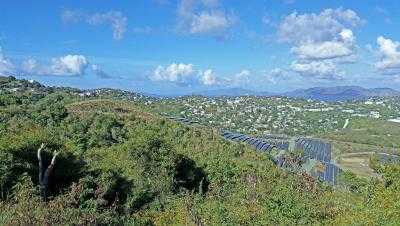Ski resorts and solar energy
The words “global” and “warming” squished together in one little phrase can strike fear deep into the hearts of skiers who, upon hearing it, will likely imagine their precious fluffy white powder shriveling into a slushy puddle.
With that in mind, it stands to reason that ski resort operators would be more invested in finding clean energy solutions than the average business. And ski resorts around the world do rank near the tops of lists of companies buying clean energy credits. But, surprisingly, they do not rank among the thousands of companies and agencies installing their own wind turbines, photovoltaic and thermal solar arrays.
While resorts are often situated in areas receiving ideal sun during the summer at the low air temperatures associated with high elevations that could make them perfect candidates for solar installations, very few have any solar at all.
The number of ski resorts in the world that operate solar-powered chair lifts doubled this year from one to two: The Tenna Resort in Switzerland and Westendorf in Austria.
It’s not that resorts aren’t concerned about their environmental impact, American resort administrators said this week; it’s that the resorts consume so much energy and at exactly the opposite time of year and during the wrong times of day to make good use of solar power.
Nonetheless, more and more resorts are starting to install solar arrays here and there, primarily as educational tools for the public, resort administrators said.
Aspen Ski Company has installed several hundred kilowatts of solar power generation, said Auden Schendler, Aspen’s environmental director.
“We don’t have a whole lot of solar, about 170 installed kilowatts” Schendler said of Aspen. “But it’s more than any other resort in the world as far as I know.”
The resort decided to commit to solar energy a couple years ago and installed a 150-kilowatt system in a partnership with the town of Carbondale last year. While a big array by ski resort standards, it doesn’t provide a significant amount of energy to the resort.
It is an investment in the community and an educational opportunity, Schendler said. The resort also makes about 6 percent a year on it, he said.
The 2 kilowatt system on the ski patrol’s headquarters, 10 kilowatts on an employee housing unit, the 4.2-kilowatt system on the golf club house, the 5 kilowatts on the Little Nell hotel and the new 7-kilowatt system planned for the top of Aspen Mountain all do even less to offset the ski company’s energy use, Schendler said.
“Solar, for us, tends to be aesthetic and educational,” he said.
The Little Nell is a luxury five-star hotel in Aspen owned by the ski company. There are photovoltaic solar panels on the roof of the building producing 5 kilowatts of power, Schendler said.
“Five kilowatts is such a small piece of that building’s load,” Schendler said. “We really struggled to find a way to make that 5 kilowatts relevant.”
But the ski company did find a way to make the solar power generation relevant. It tied all of the power the solar array produced into one of the hotel’s luxury suites and installed monitoring equipment so guests can see what the panels are doing and how they are powering the luxury room.
“Now it’s an educational piece,” Schendler said. “We’re reaching this incredibly influential group of guests with this message about solar power.”
Story continues here.
Pictured: Highlands solar, photo credit Auden Schendler.




